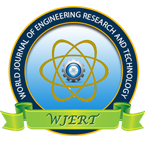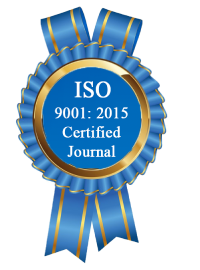| All | Since 2020 | |
| Citation | 172 | 110 |
| h-index | 7 | 5 |
| i10-index | 1 | 0 |
WJERT Citation 
Login
News & Updation
Abstract
USE OF EMPTY-OIL-PALM-FRUIT-BUNCH ASH AS A PARTIAL SUBSTITUTE FOR CEMENT IN STRUCTURAL CONCRETE
Adinna Boniface Okafor*
ABSTRACT
The oil palm, Elaeis guineesis, is an agricultural tree grown extensively in West Africa, Malaysia and Indonesia. It produces it fruits in bunches, each bunch containing 150 to 200 fruits held in sockets in one fruit bunch. During harvest, the bunch is defruited and the empty-oil-palm-fruit-bunch (EOPFB) is discarded as waste. In countries that produce red palm oil for export, this waste normally constitute environmental problems. This study investigates the possibility of using the ash produced from empty-oil-palm-bunch as a partial substitute for cement in concrete production in order to provide an economic and proper way of disposal for the agro-waste. In this regard, a nominal mix proportion of 1:1?:3 (being ratios of cement, sand and gravel) with a water-cement ratio of 0.55 was used to produce concretes containing 0%, 10%, 20% and 30% of empty oil-palm-fruit-bunch ash (EOPFBA) as a partial substitute for cement; the percentages being calculated by weight of the original cement content. 48 cubes were produced, 12 for each of the percentage substitutions. Two cubes from each of the percentage ash contents were tested for compressive strength at 7, 14, 21, 28, 60 and 90 days of water curing, and the results analyzed with graphs. The oxide composition of the ash was also investigated with x-ray fluorescence spectrometer. From the graphs it was observed that the concretes of the various ash contents hydrated like every other pozzolana and the strengths of 10% and 20% ash contents equalized with that of zero percent (0%) at 90 days water curing instead of 28 days as already known for rice-husk ash and fly ash. From the oxide composition it was also observed that silica, alumina and iron oxide content of the empty-oil- palm-fruit bunch ash was much lower than the values commonly found in rice husk and fly ash, and that could be the reason for the slow pozzolanic reaction. It was then concluded that empty-oil-palm-fruit-bunch ash is a pozzolana and should be used to substitute cement at 10 ? 20% by weight of the original cement content in concrete. The concrete so produced should be protected from aggressive chemical as it may contain more pores relative to the control.
[Full Text Article] [Download Certificate]
